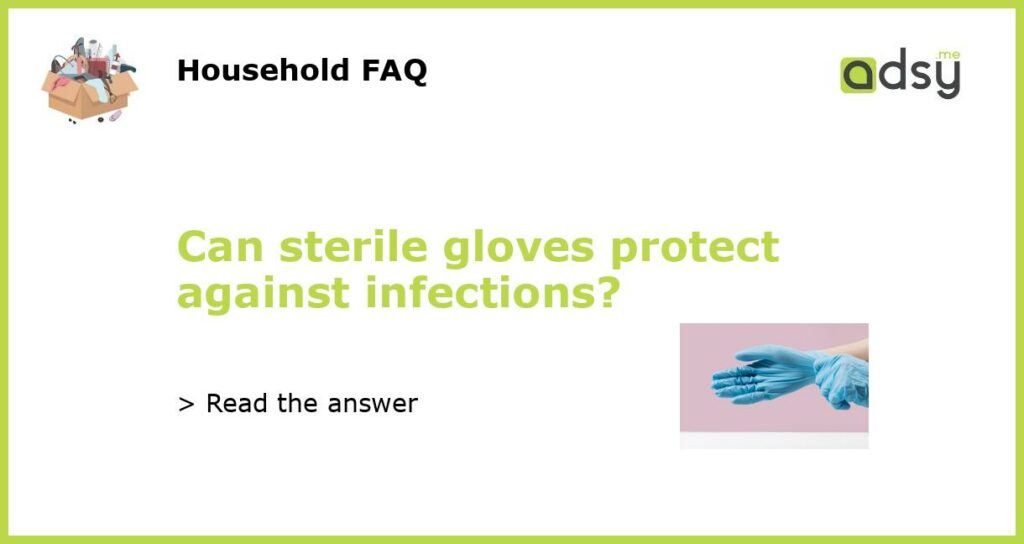Yes, sterile gloves can protect against infections
Sterile gloves are an essential tool in preventing the spread of infections in various healthcare settings. Whether it is in hospitals, clinics, or even at home, these gloves serve as a barrier between healthcare professionals and patients, reducing the risk of transmitting harmful microorganisms.
The importance of using sterile gloves
When conducting medical procedures or examinations, healthcare professionals must adhere to strict infection control guidelines. Using sterile gloves is a fundamental practice that helps maintain a sterile environment and prevent the spread of infections.
During surgery or invasive procedures, sterile gloves create a protective barrier for the healthcare worker, reducing the transmission of bacteria and other pathogens. These gloves are manufactured in a controlled environment to eliminate any potential contaminants, ensuring a higher level of safety during procedures.
Preventing contamination and cross-infection
One of the primary reasons for using sterile gloves is to prevent contamination and cross-infection between patients. By wearing sterile gloves, healthcare professionals can minimize the risk of transferring potentially harmful microorganisms from one patient to another.
Contamination can occur through direct contact with the patient’s body fluids, such as blood, saliva, or respiratory secretions. Sterile gloves act as a physical barrier, preventing these fluids from coming into direct contact with the healthcare professional’s hands. This reduces the likelihood of transmitting any infectious agents to another patient or contaminating the environment.
Types of sterile gloves
There are various types of sterile gloves available, each designed for specific purposes and procedures. The most commonly used sterile gloves are made from latex or nitrile materials. Latex gloves offer excellent tactile sensitivity and flexibility, making them ideal for intricate procedures. However, some individuals may have latex allergies, so nitrile gloves are a suitable alternative.
In addition to surgical gloves, there are sterile examination gloves that are used for non-invasive procedures, such as physical examinations, wound dressings, and injections. These gloves also play a crucial role in preventing infections by creating a barrier between the healthcare professional’s hands and the patient.
Proper usage and disposal
While sterile gloves are effective in preventing infections, their effectiveness relies on proper usage and disposal. It is crucial for healthcare professionals to adhere to proper hand hygiene practices, including handwashing before and after glove use.
When donning sterile gloves, it is essential to check for any signs of damage or compromise in sterility. If the gloves are torn or contaminated, they should be replaced immediately. It is also important to remove gloves properly by peeling them off inside out to avoid any potential contamination.
After use, sterile gloves should be disposed of in appropriate waste containers to prevent the risk of infection transmission. Healthcare facilities follow strict protocols for glove disposal to ensure the safety of both patients and healthcare professionals.
Sterile gloves are a vital part of infection control practices in healthcare settings. By creating a barrier between healthcare professionals and patients, sterile gloves significantly reduce the risk of infections. It is crucial for healthcare professionals to understand the proper usage and disposal of sterile gloves to maintain a sterile environment and prevent cross-infection.






